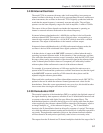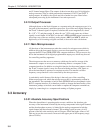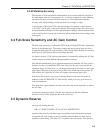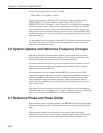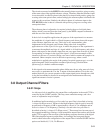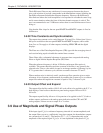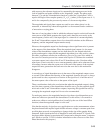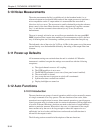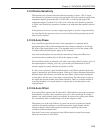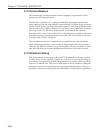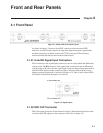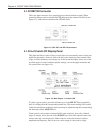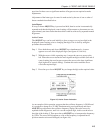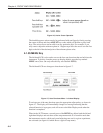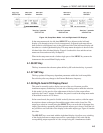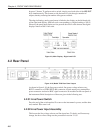
3-15
Chapter 3, TECHNICAL DESCRIPTION
3.12.02 Auto-Sensitivity
This function only operates when the reference frequency is above 1 Hz. A single
Auto-Sensitivity operation consists of increasing the full-scale sensitivity range if the
magnitude output is greater than 90 % of full-scale, or reducing the range if the
magnitude output is less than 30 % of full-scale. After the Auto-Sensitivity function
is called, Auto-Sensitivity operations continue to be made until the required criterion
is met.
In the presence of noise, or a time-varying input signal, it may be a long time before
the Auto-Sensitivity sequence comes to an end, and the resulting setting may not be
what is really required.
3.12.03 Auto-Phase
In an Auto-Phase operation the value of the signal phase is computed and an
appropriate phase shift is then introduced into the reference channel so as to bring
the value of the signal phase to zero. The intended result is to null the output of the
Y channel while maximizing the output of the X channel.
Any small residual phase can normally be removed by calling Auto-Phase for a
second time after a suitable delay to allow the outputs to settle.
The Auto-Phase facility is normally used with a clean signal which is known to be of
the required phase. It usually gives very good results provided that the X and Y
channel outputs are steady when the procedure is called.
If a zero error is present, it must be nulled with an Auto-Offset operation before the
signal is applied and Auto-Phase executed. If the error is due to unwanted interaction
between signal and reference (crosstalk) the Auto-Phase, while actually setting the
correct phase, will not give a zero value of signal phase. The final step is to remove
the signal and execute another Auto-Offset operation. This is a powerful method of
removing the effect of crosstalk which is not generally in the same phase as the
required signal.
3.12.04 Auto-Offset
In an Auto-Offset operation the X offset and Y offset functions are turned on and are
automatically set to the values required to give zero values at both the X and the Y
outputs. Any small residual values can normally be removed by calling Auto-Offset
for a second time after a suitable delay to allow the outputs to settle.
The primary use of the Auto-Offset is to cancel out zero errors which are usually
caused by unwanted coupling or crosstalk between the signal channel and the
reference channel, either in the external connections or possibly under some
conditions in the instrument itself.
Note that if a zero error is present, the Auto-Offset function should be executed
before any execution of Auto-Phase.



